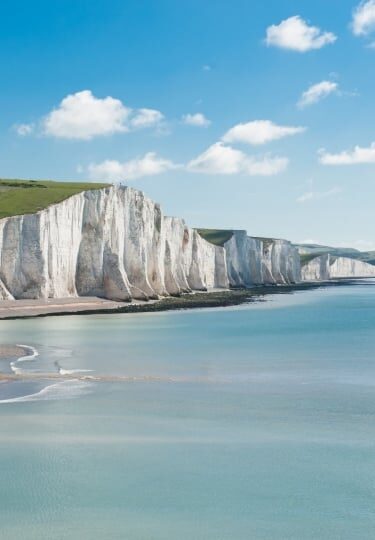Dover, England, along with its instantly recognizable chalky White Cliffs, has been considered a “gateway” to Britain for millennia. This important coastal region has served as a strategic location in terms of Britain’s defense against invasion for centuries.
With views on a clear day across the Strait of Dover to Calais, France, modern-day Dover is a busy port, surrounded by ancient castles, coastal fortifications, promenades and clifftop walks, with lots of lovely rural countryside to explore.
Here’s an insider’s guide to Dover, along with a few highlights from the surrounding region, to help you make the most of your time exploring this stretch of picturesque southeastern English coast.
Why Visit Dover, England
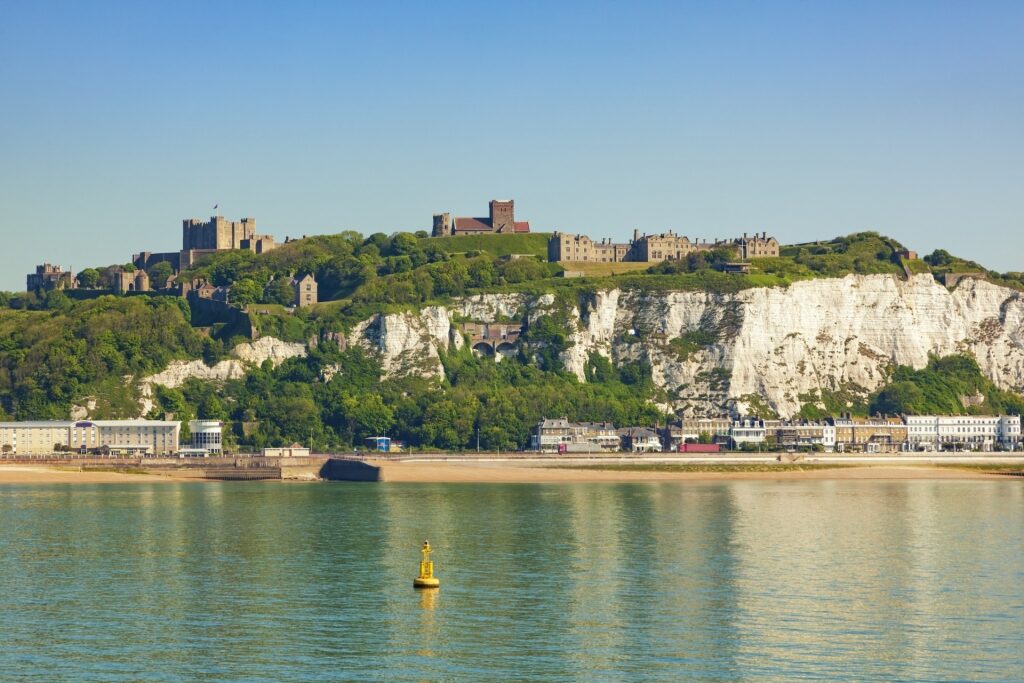
Dover
Located in the county of Kent, the town of Dover offers visitors a deep insight into the nation’s past, as well as a look at the workings of Dover Port, which is the busiest passenger ferry port in Europe.
From castle visits and coastal and clifftop treks to learning more about the local history at the seafaring-themed Dover Museum, you’ll never run out of things to do when you call at this famous port.
You can go inside the “secret” (not any more) military tunnels, check out the local marine life, and drop in on numerous historic sites in and near the town.
History & Culture

Dover
Dover has a long and storied history. The Romans, back in the day, set up shop here, borrowing the Celtic word dubras, which means “waters”, and changing it to Dubris for the name for their ancient port.
The region’s castles and hill forts have been the scene of repeated invasion attempts and sieges over the centuries, by the likes of Julius Caesar, King Philip II of France, Napoleon, and most recently and infamously, Adolf Hitler.
Solid fortifications and wartime construction have always been a high priority in Dover, from the Roman, Saxon, and Tudor times until the modern era. During the ninth century, Alfred the Great built fortified burh settlements—walled towns—along the coast to keep the Danish at bay. Dover received its own defensive burh in the 10th century.
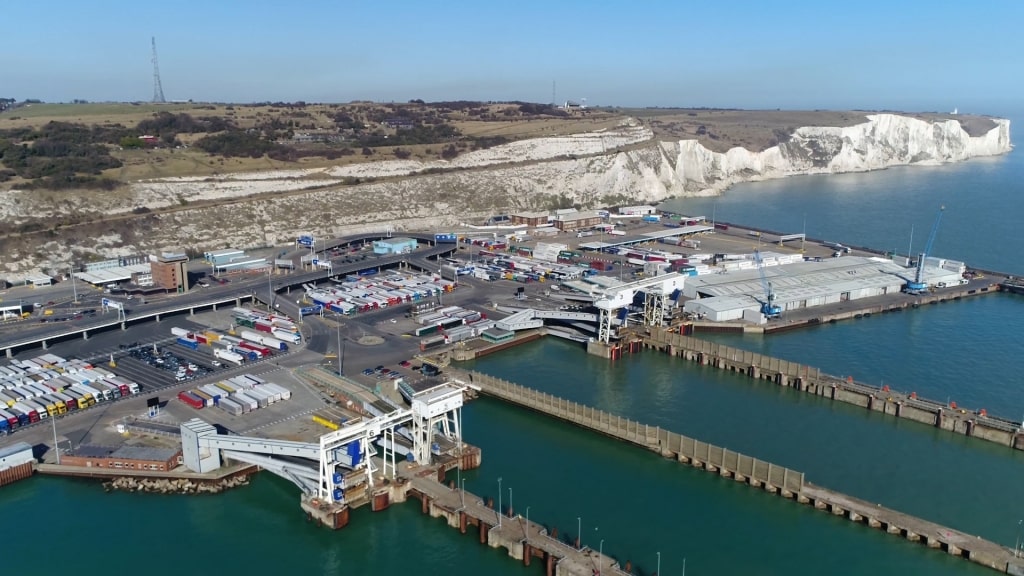
Dover Port
The Normans invaded in 1066 and burned the town to the ground. In the 12th century the first Plantagenet King, Henry II, constructed a castle in Dover. During the 19th century, the port really came into its own, offering travelers quick ferry access to continental Europe across the Strait of Dover.
And of course, during WWII, the White Cliffs of Dover were heavily fortified with gun batteries to attack German ships, help with the wartime efforts, and prepare for a potential German invasion (which never came) across the English Channel.
Tips for Visiting Dover
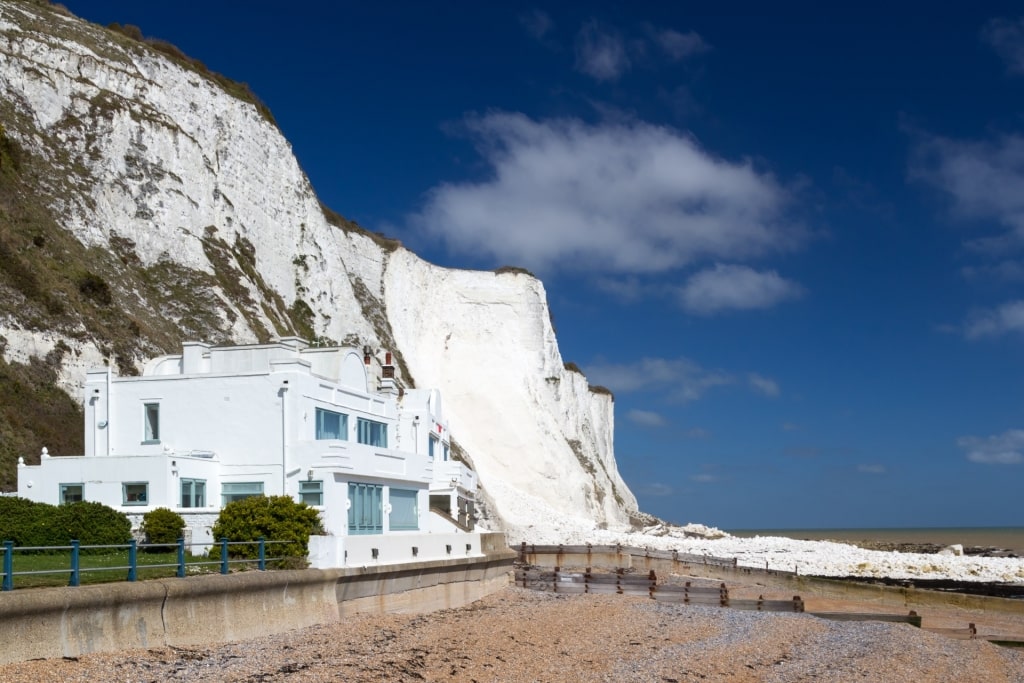
St. Margaret’s Bay
If you plan on visiting Dover, bring your appetite for nourishing seafood, along with a thirst for learning about history—plus a good pair of walking shoes or boots.
Dover is known for its splendid countryside and coastal walking trails, which is why you’ll need solid footwear to see it all, whether you’re wandering around town, walking across the White Cliffs, or trekking east toward the delightful little town of St. Margaret’s Bay.
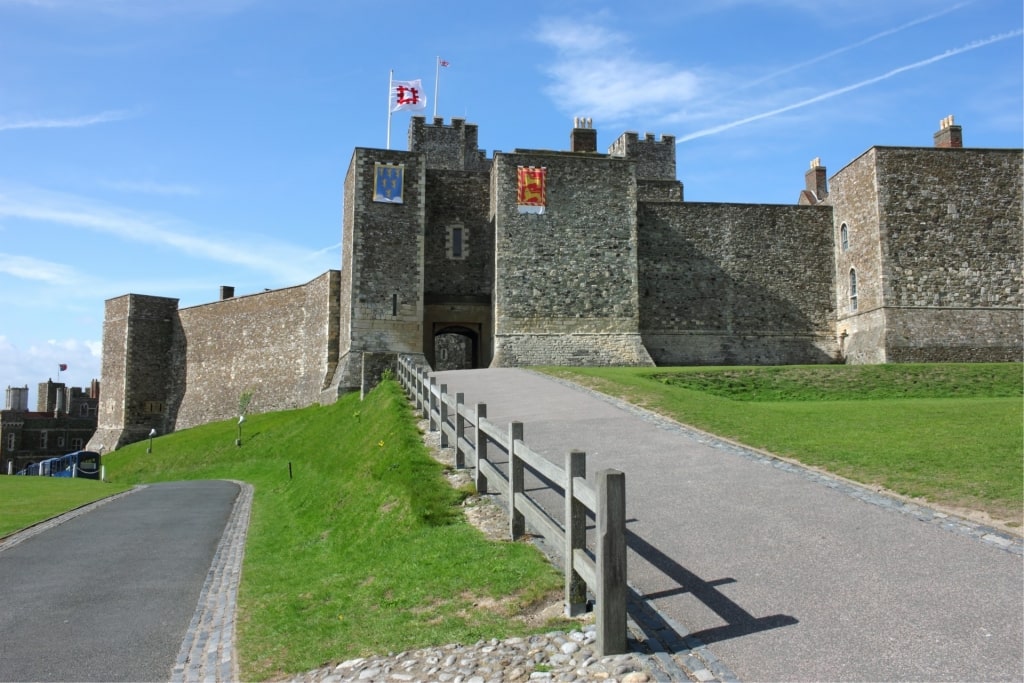
Dover Castle
Budget enough time for some of the longer walks, and visits to Dover Castle—several hours at least—and Dover Museum. Pack some light rain gear if you plan on being out in the elements for a spell, as inclement weather and sudden downpours can appear at any time.
Wildlife & Nature
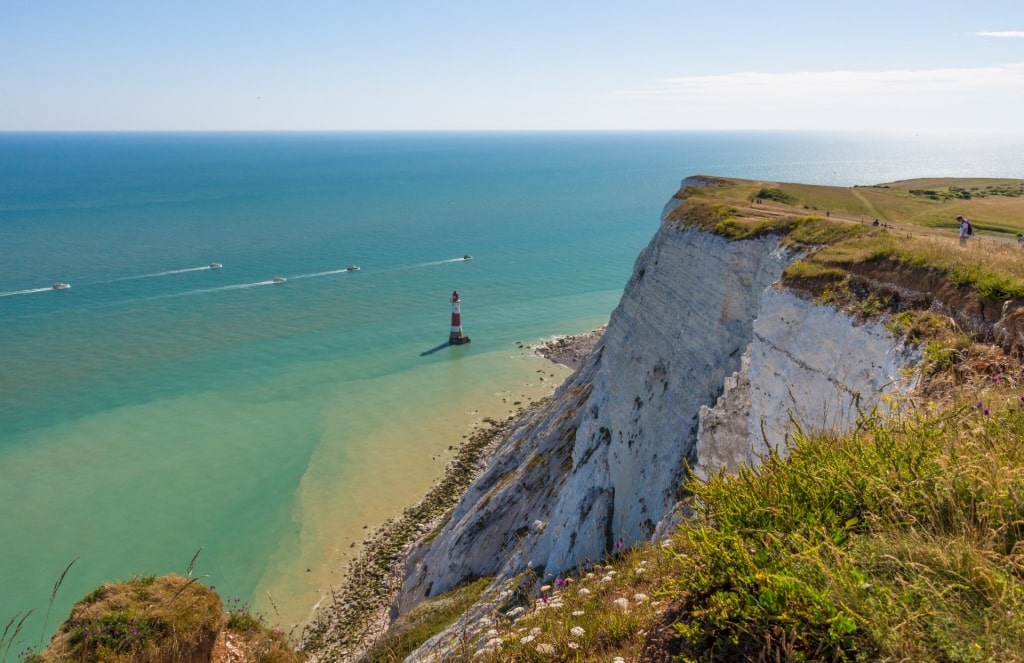
White Cliffs of Dover
The countryside around Dover is brimming with plants, wildflowers and winged creatures fluttering about. You’ll also come across miles and miles of wonderful walking and biking trails.
The chalk grassland atop the cliffs—restored and maintained in large part by the National Trust—is home to wildflowers like the viper’s bugloss, the early spider orchid, and buttercups and oxeye daisies.
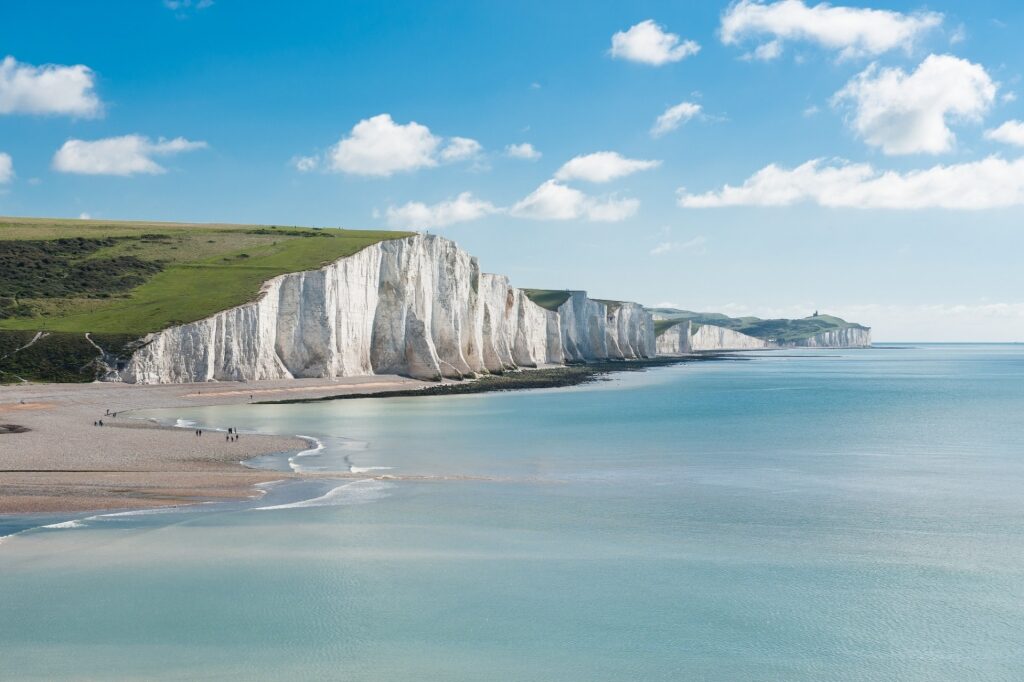
White Cliffs of Dover
Flying critters calling this region home include the Adonis Blue and Red Admiral butterflies, impressively large ravens, herring gulls, and the peregrine falcon. If marine life tickles your fancy, you can opt for a sea safari to view the iconic White Cliffs from the water, and a sizable basking colony of local harbor seals.
Things to Do & Attractions in Dover
Walk Along the White Cliffs of Dover
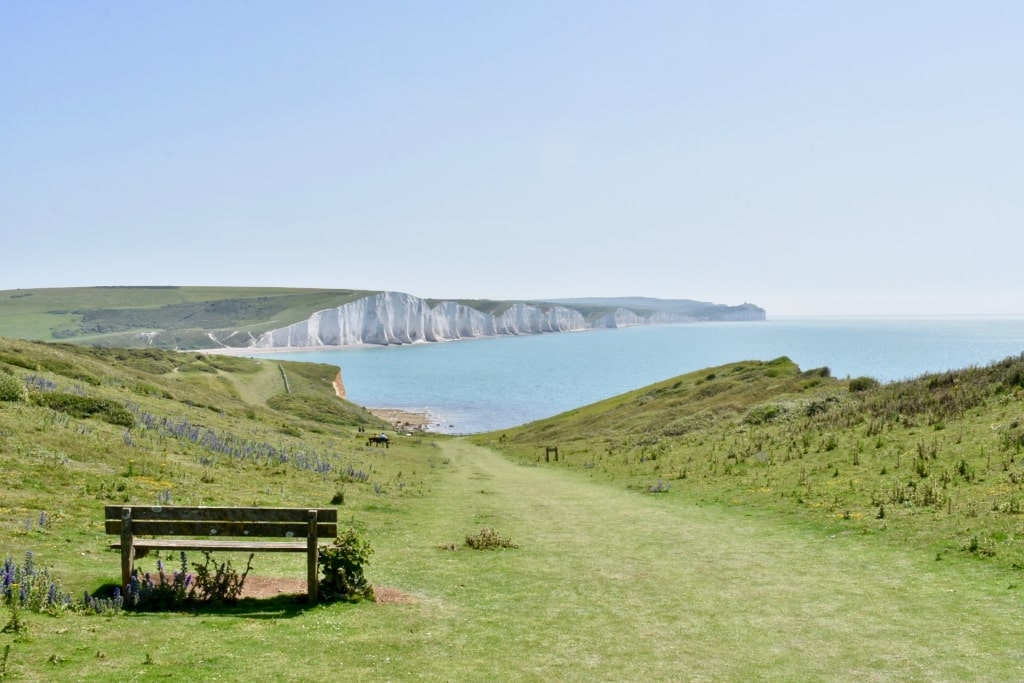
White Cliffs of Dover
The chalky White Cliffs of Dover are the town’s most recognizable feature, literally looming large over the bustling port, and looming large in the historical imagination of Britain and Europe.
As one of the best hikes in the UK, a nature walk atop the cliffs along the fairly short and easy-to-navigate Coast Path loop trail, accessible from the National Trust’s White Cliffs of Dover parking lot, is a must during your visit.
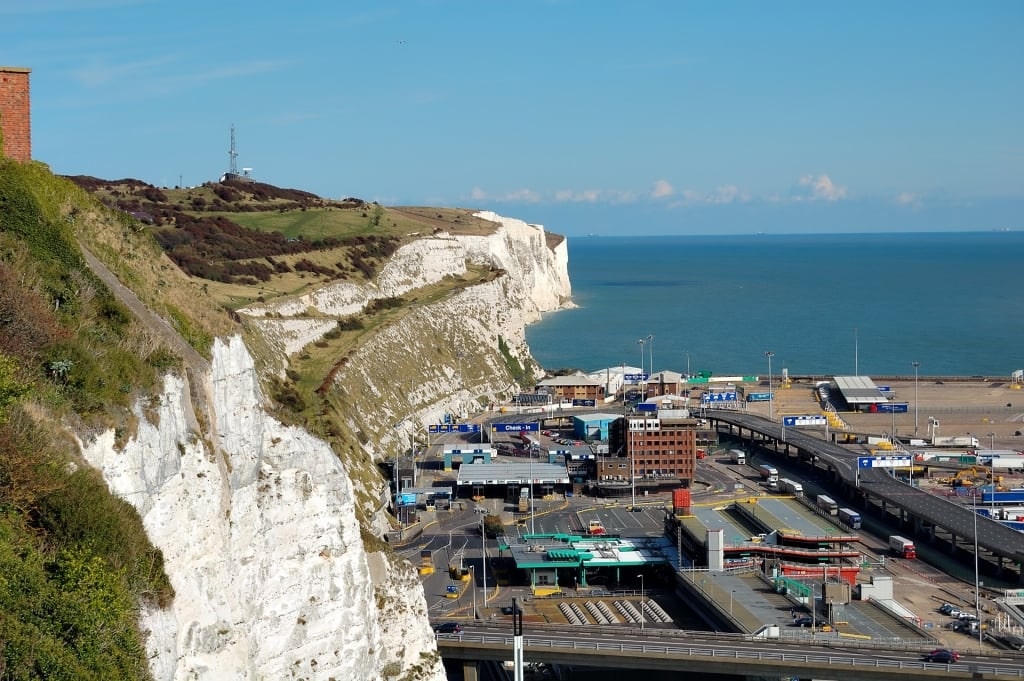
Dover Port
From the path, you can gaze down upon the ferry docks, take in the leafy chalk grassland, and weather permitting, catch sight of France to the south, across the Dover Narrows.
Explore Dover Castle and the Wartime Tunnels
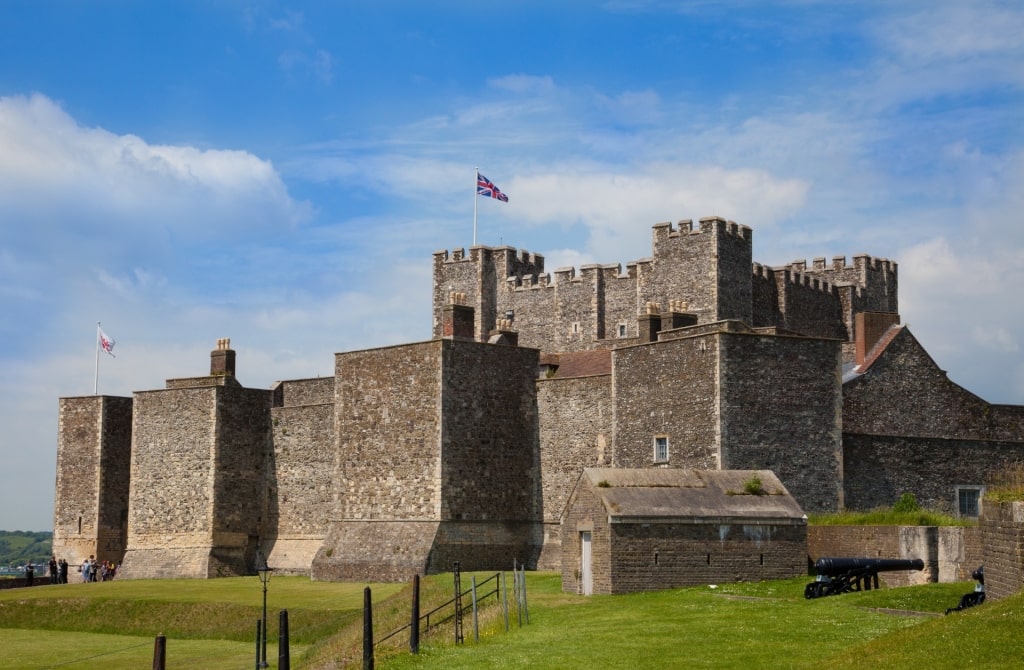
Dover Castle
Kent’s Dover Castle has an action-packed history, stretching back 2,000 years. With approximately 80 acres of grounds, this clifftop castle fortress, long considered the “Key to England”, has seen its share of frontline combat.
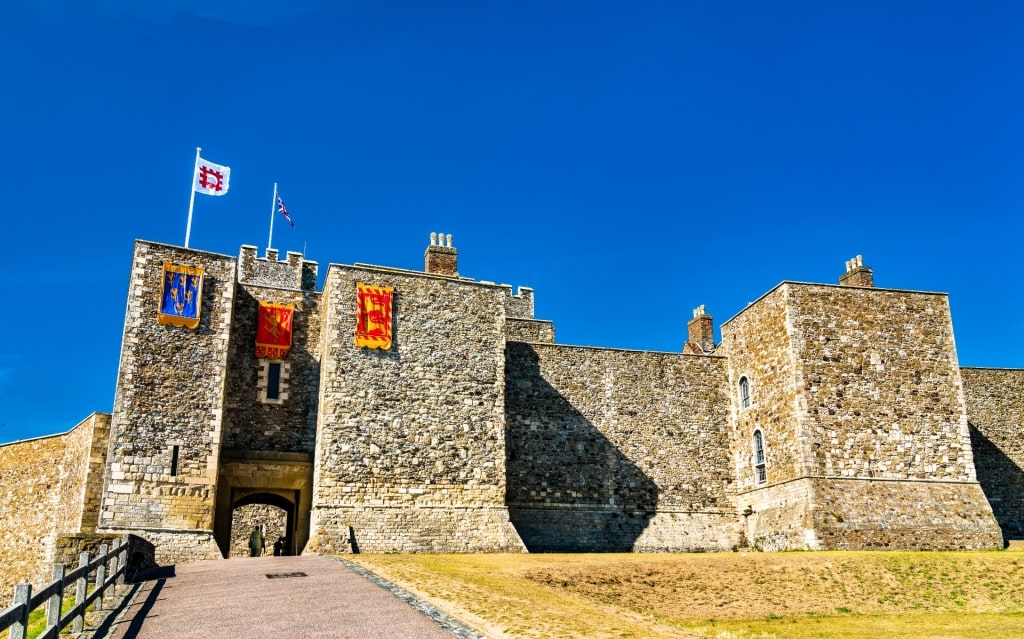
Great Tower, Dover Castle
You can visit King Henry II’s celebrated Great Tower, with its royal rooms kept in as authentic condition as possible, or wander down to the tunnels where the WWII Dunkirk emergency evacuation was planned, and learn more about the harrowing evacuation.
If wetter weather rolls in, and wandering the castle grounds doesn’t appeal, the Underground Hospital (used during the Second World War) and the Secret Wartime Tunnels, inside the cliffs, are also worth exploring. These hollowed-out cavernous spaces have been used for hundreds of years as safe harbors for the defenders of England.
Visit Dover Museum
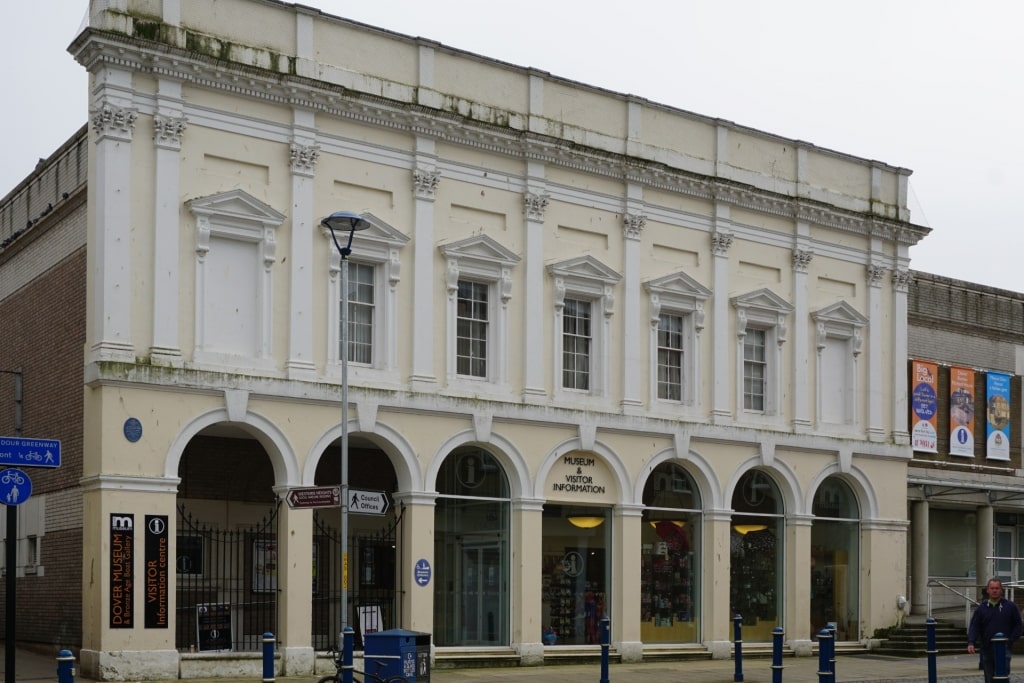
Dover Museum Photo by Nessy-Pic on Wikimedia Commons, licensed under CC BY-SA 4.0
Dover Museum, housed in a newer three-floor edifice behind its original 1846 Victorian façade, is dedicated to telling the rich history of Dover, from the Stone Age, Roman, Saxon, and Tudor times to modern-day England.
The museum’s scaled models of the town will give you a glimpse into the region’s past. Other highlights include the Bronze Age Boat exhibit, considered the oldest existing example of a seafaring vessel on the planet. The museum is also a great place to learn more about Dover’s strategic role during the First and Second World Wars.
Trek to South Foreland Lighthouse
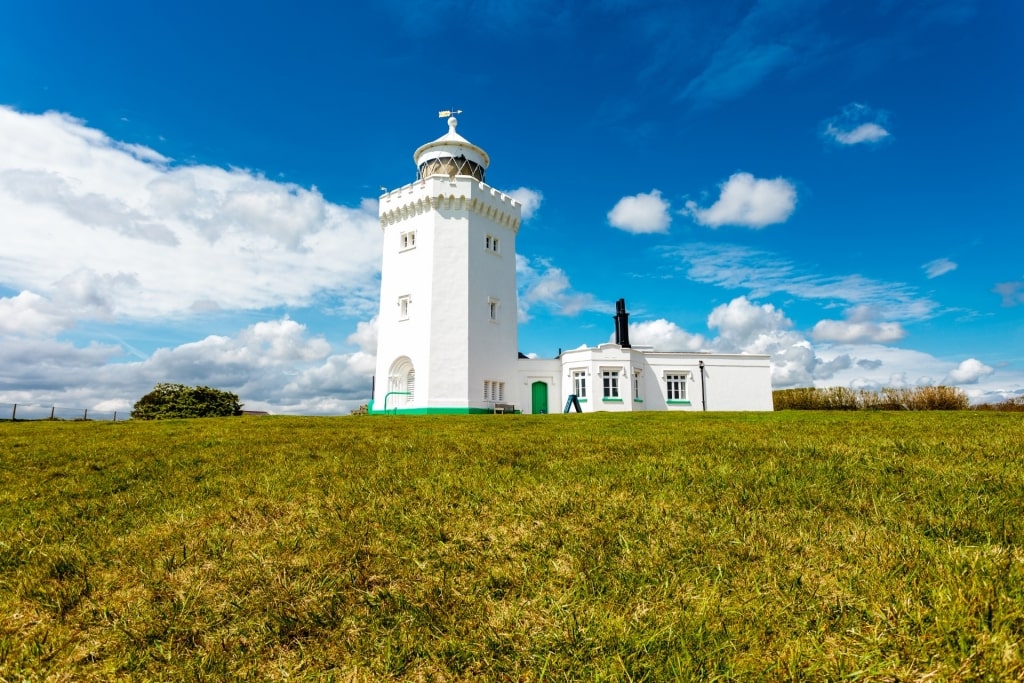
South Foreland Lighthouse
While meandering across the White Cliffs of Dover on a nature walk, try to carve out some time to visit the South Foreland Lighthouse, which is about a two-mile trek from the visitor center.
This attractive Victorian lighthouse will offer you spectacular views of the English Channel and surrounding chalk grassland. While visiting, you can opt for a historic lighthouse tour, lounge about on deck chairs or picnic benches, play lawn games, and even fly a kite. You can usually count on a decent breeze here.
You can also drop in on the oh-so-cozy Mrs. Knott’s tea-room, adjacent to the lighthouse, if you’re feeling peckish and want to tuck into some tasty sausage rolls, homemade cakes and scones, or treat yourself to a nice cuppa (hot tea).
Wander Around Kingsdown Beach, and Walmer Castle and Gardens
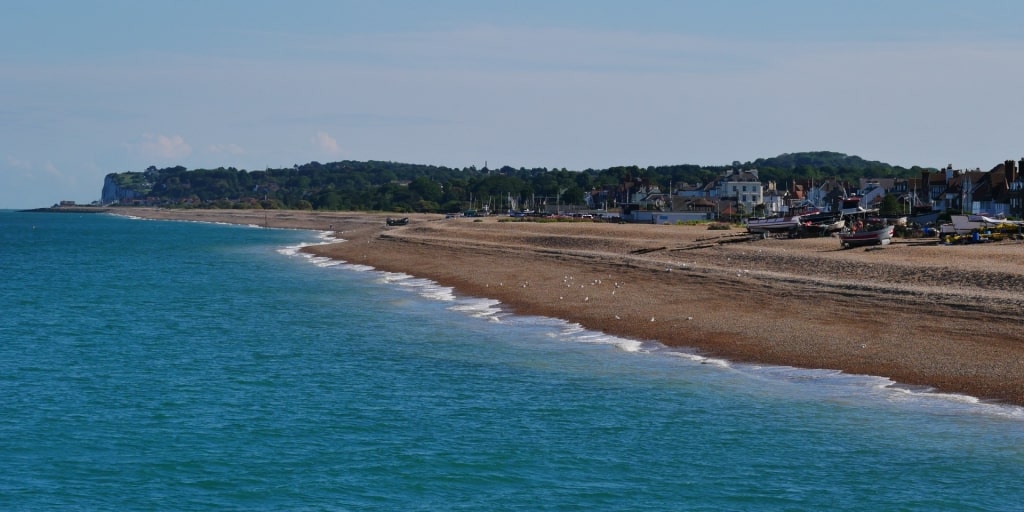
Kingsdown Beach
Kingsdown and its pebbly beach is a somewhat secluded expanse of coastline along the northern border of the White Cliffs of Dover. One of the UK’s best beaches, it’s great for a quiet afternoon stroll, and when the tide is out, exploring the local tidepools, and perhaps spotting a few seals.
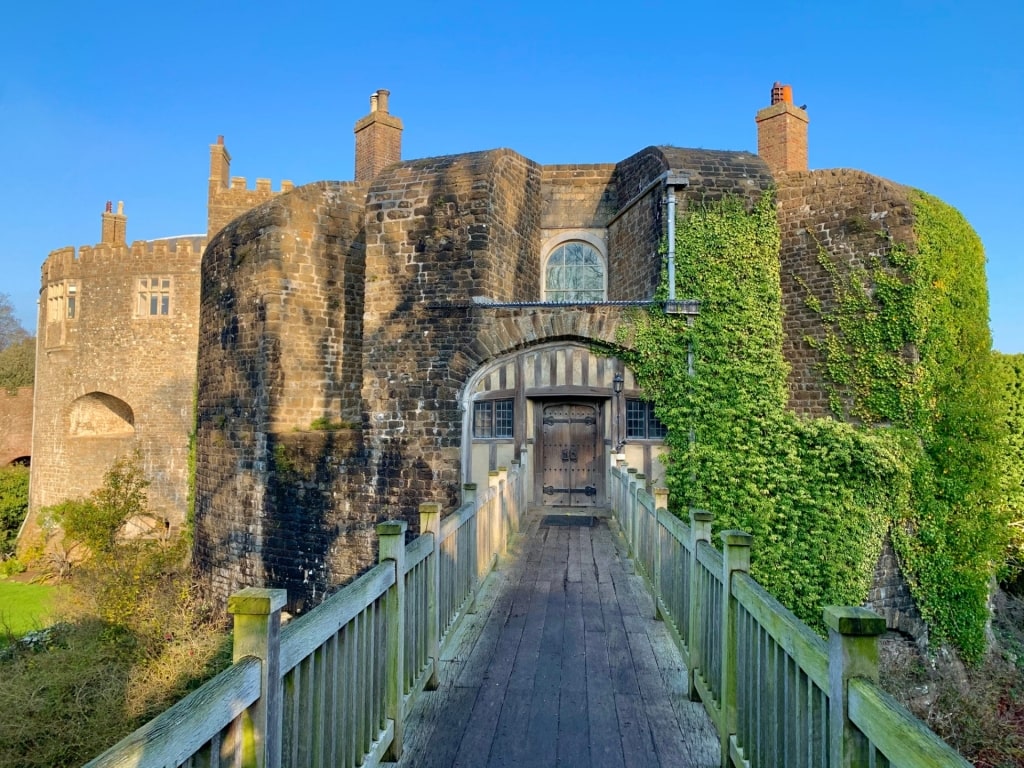
Walmer Castle and Gardens
Near Kingsdown, you’ll also come across the exquisitely maintained Walmer Castle and Gardens, which is a former Tudor artillery fort, originally constructed during King Henry VIII’s reign, then later transformed into a stately royal residence for Lord Warden.
The handsome interior of Walmer Castle is well worth touring through. The elegant castle grounds are beautiful, too, with more than eight acres of manicured gardens, a woodland walk, grand herbaceous borders, and a sunken glen garden to explore.
Hike Across the Samphire Hoe Nature Reserve
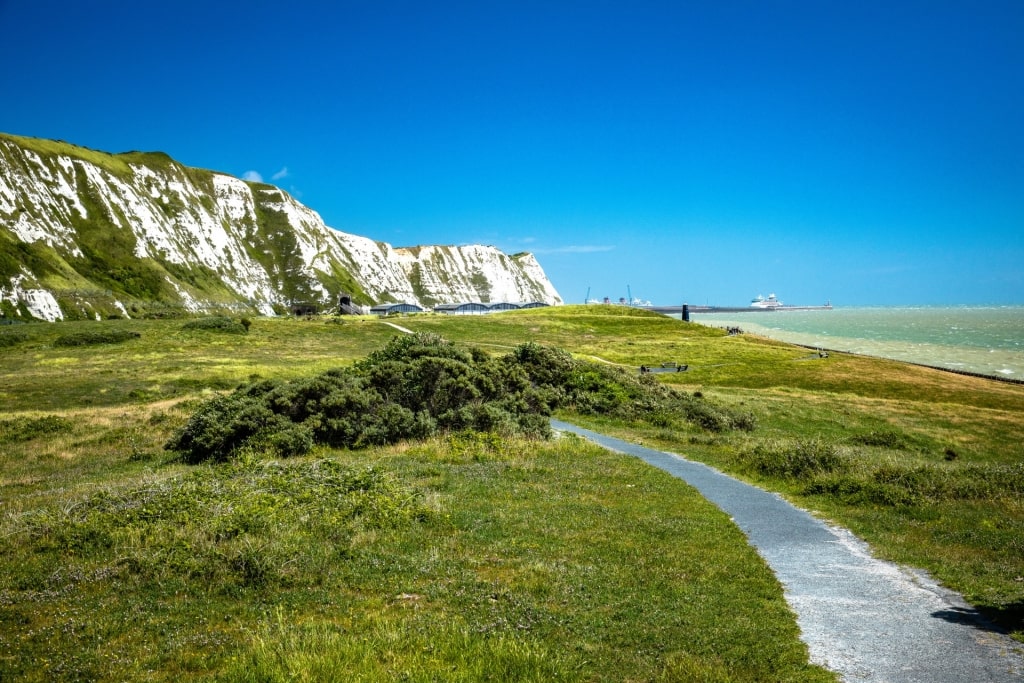
Samphire Hoe Nature Reserve
If picturesque nature beckons to you, then during your visit to Dover, plan on spending an hour or two hiking around the Samphire Hoe Nature Reserve.
This 30-hectare reserve, just below the White Cliffs of Dover, was created with leftover chalk marl, excavated to dig the Channel Tunnel.
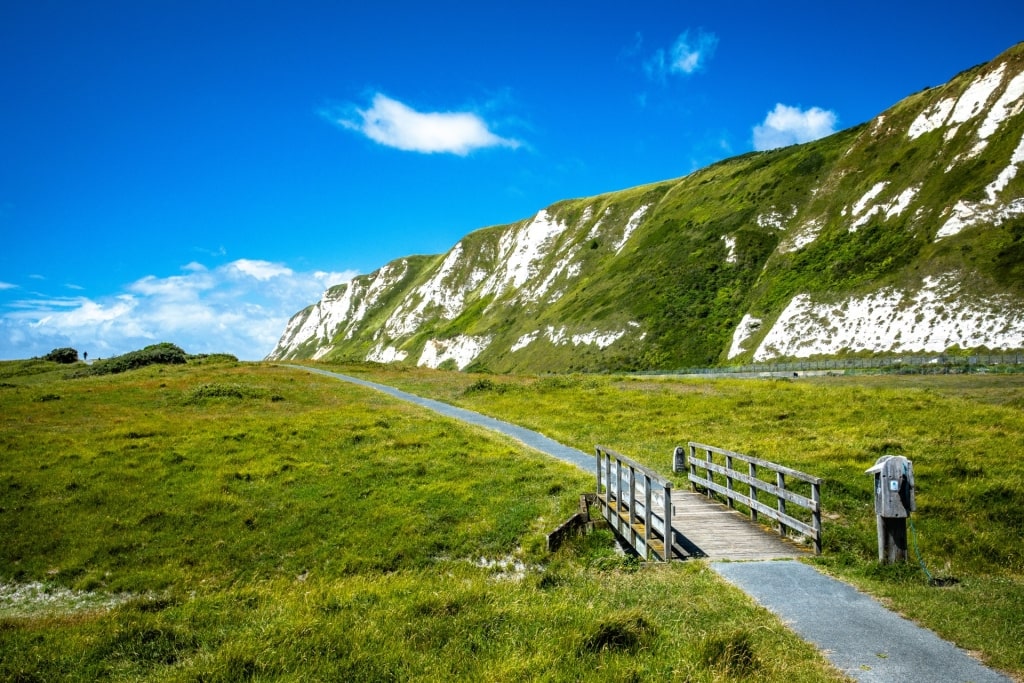
Samphire Hoe Nature Reserve
The reserve offers rambles through grassy meadows bursting with wildflowers and plants, kestrel hawks riding wind currents overhead, anglers hunting for fish from the seawall, plus a walking path—a little over a mile long—that stretches across the park.
Swing by Leeds and Deal Castles
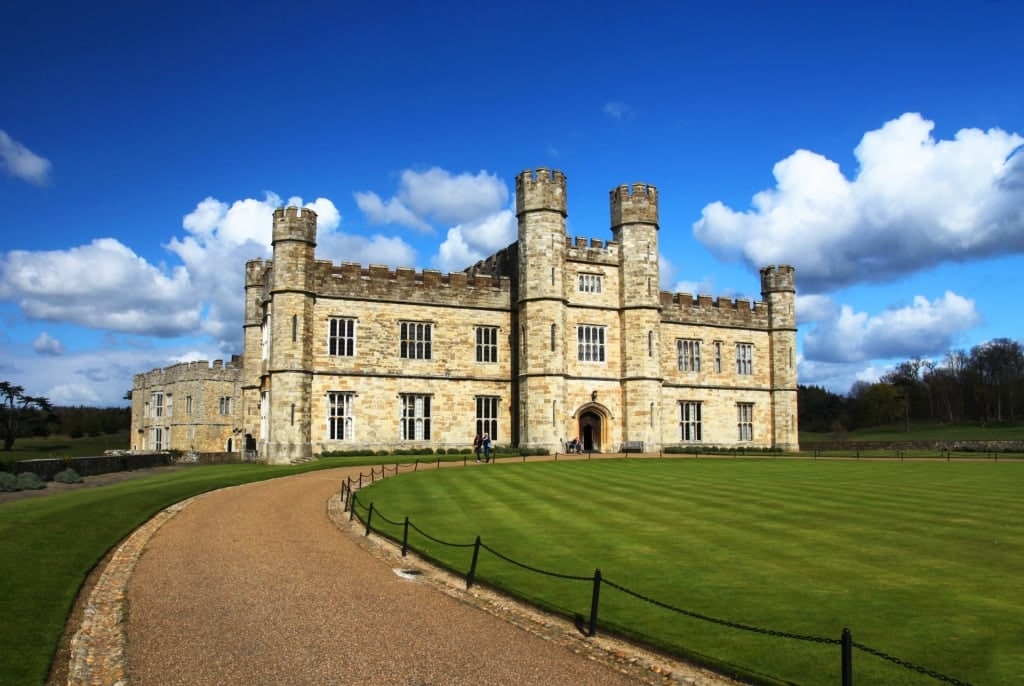
Leeds Castle
You’ll soon realize that there are many historical sites in and close to Dover. Two castles that you might want to check out, quite different from one another, are Leeds and Deal Castles.
Leeds Castle, a little over 30 miles from Dover, is often referred to as the “loveliest castle in the world”, which seems apt. The castle, with 500 acres of lush estate grounds, has served as a Norman stronghold, a home and palace for English kings and queens, a Georgian manor, and more.
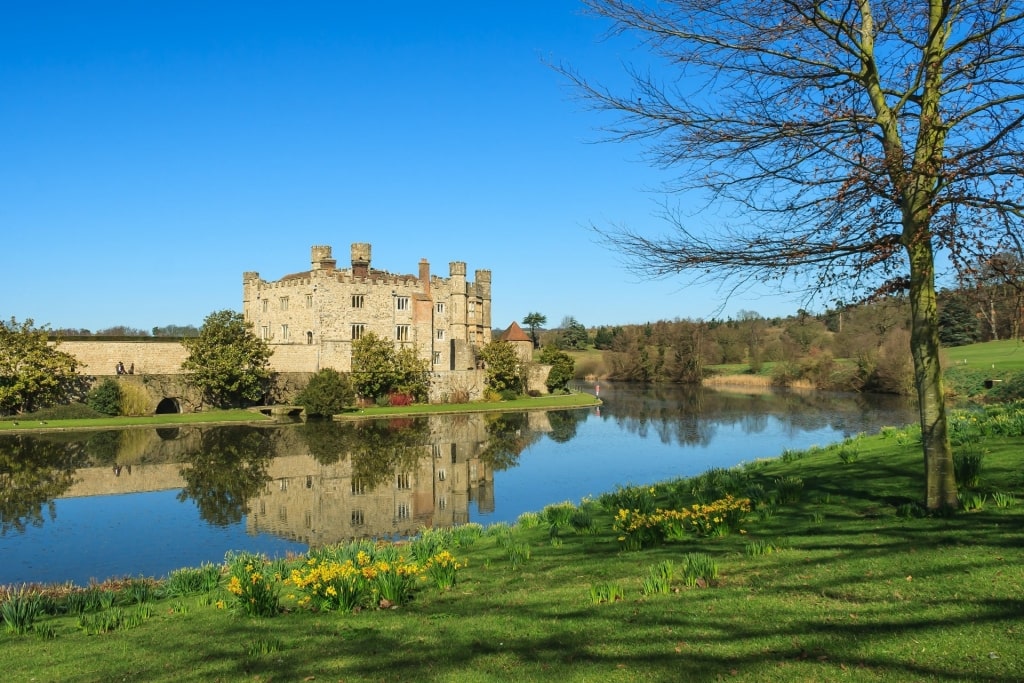
Leeds Castle
The castle itself was built on two small islands set out on a scenic lake and looks like a vision from a fairytale. You could easily spend an entire day here exploring the gardens and the maze, watching falconry displays, and even visiting the Dog Collar Museum, an unusual idea for a collection if ever there was one.
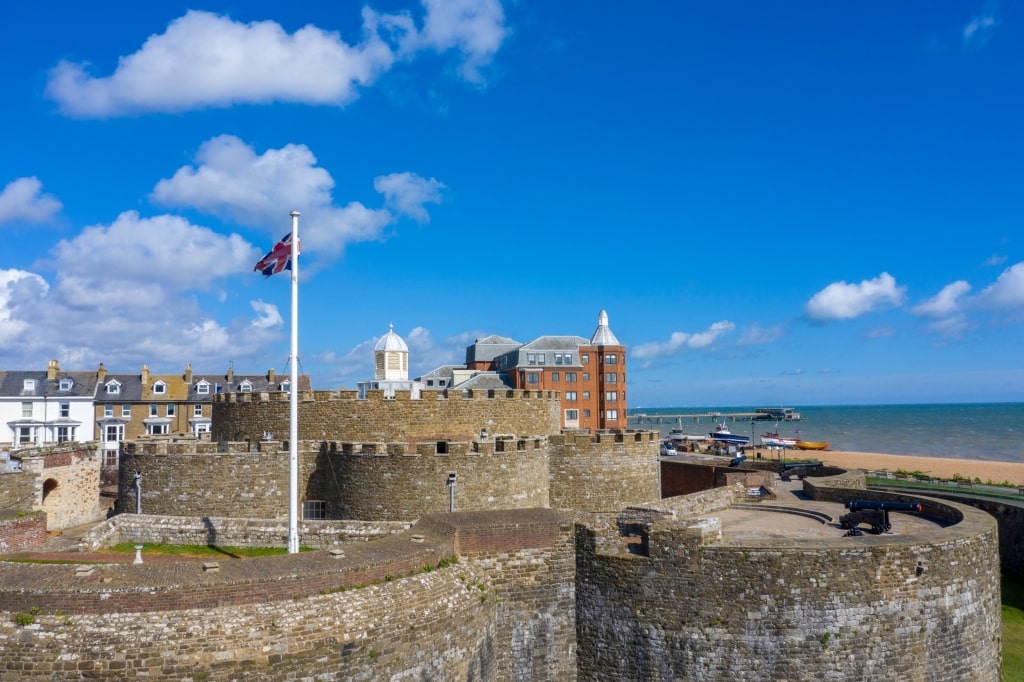
Deal Castle
Deal Castle, on the other hand, is a tough-looking Tudor artillery fort constructed for battle, with a more rough-and-tumble aspect when compared to the pleasure-seeking atmosphere that pervades Leeds Castle.
The seaside town of Deal is just north of Walmer Castle. Deal’s imposing circular-shaped fort, still in pristine condition, serves as a mesmerizing example of how seriously Henry VIII took his coastal defenses against would-be European invaders.
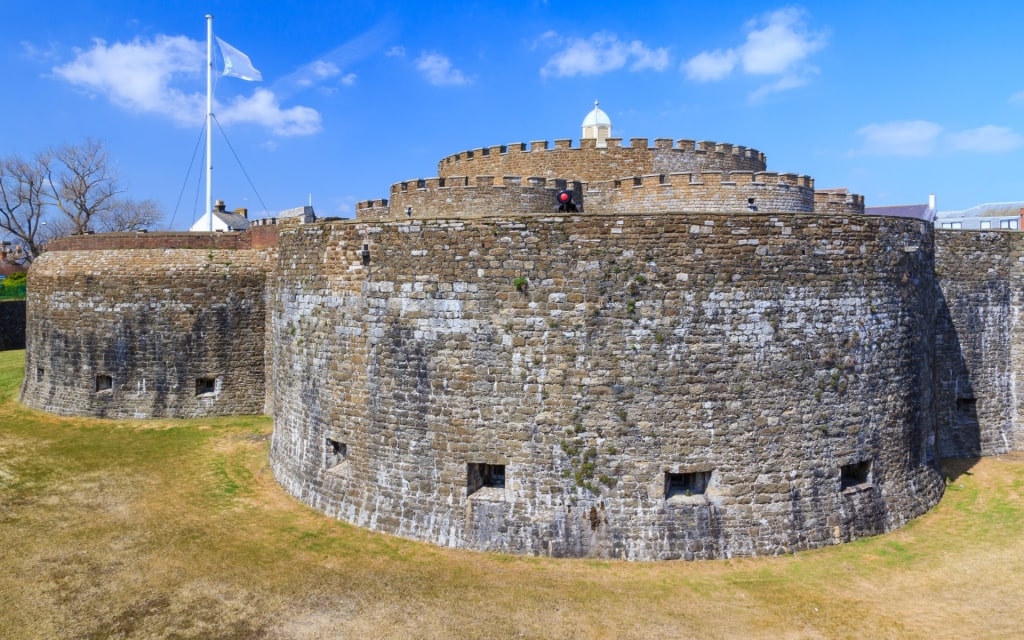
Deal Castle
The entire castle is open for you to explore. Climb around the battlements and imagine what it would have been like to defend this historical fortress against marauding attackers.
Food & Drink
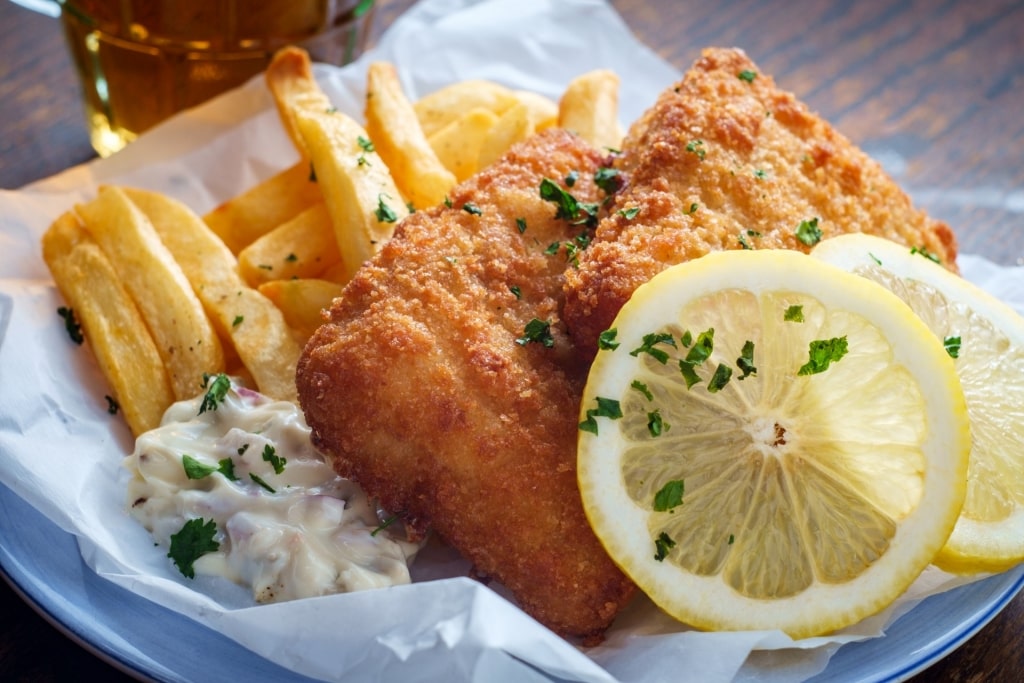
Fish and chips
For food fanatics, Dover offers all manner of gastronomic delights, from pub staples like fish and chips, savory pies and frothy pints of local IPAs and ales to Turkish cuisine and more upscale fare.
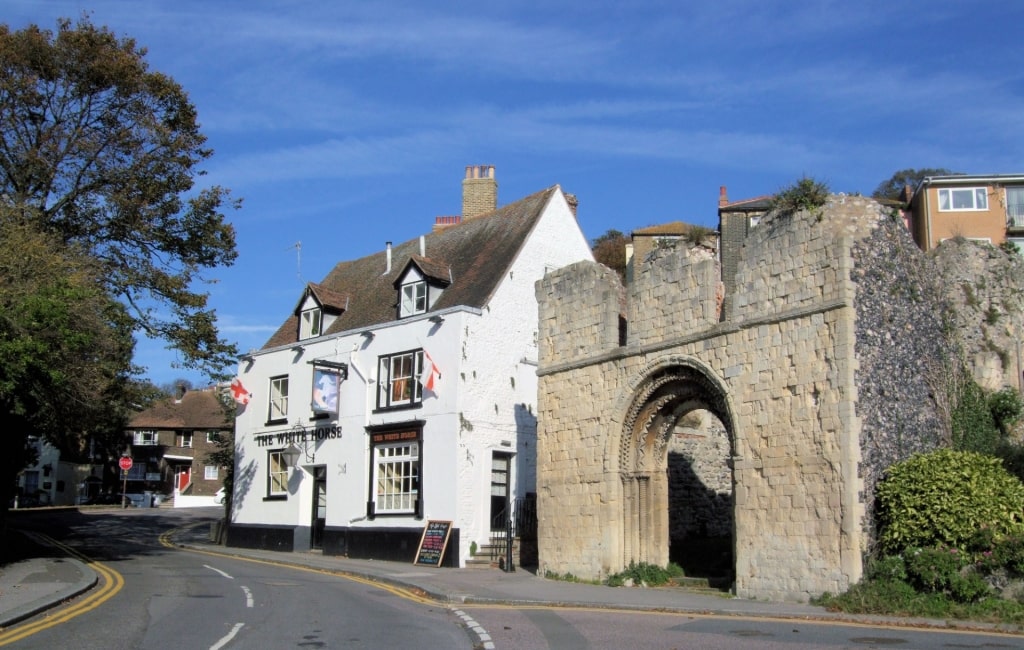
White Horse Photo by Jim Linwood on Flickr, licensed under CC BY 2.0
The White Horse is a classic English pub below Dover Castle, known for its congenial atmosphere, codfish and chips, beef burgers topped with chorizo, plus vegan meatballs for non-carnivores.
Aspendos Dover is a Turkish establishment that serves lamb shish kebab, BBQ chicken wings and other flavorsome culinary treats, while The Allotment specializes in Mexican food, including tapas, fajitas and more.

Moules marinières
Seafood lovers will be at home in the Dover Patrol Restaurant & Bar, where you can tuck into smoked mackerel pâté, grilled sardines, beer-battered king prawns, and moules marinières (mussels cooked in white wine, garlic and shallot).
Café culture also reigns supreme in Dover. You’ll stumble across cafés and tea rooms around almost every corner. Swing by The Boardwalk Café in De Bradelei Wharf for some piping hot coffee, paninis, pastries and different nibbles, with a few vegan options on the menu as well.

Scones
The Pines Garden Tea Room in St. Margaret’s Bay will offer you a quintessentially English tea room experience in a soothing rural garden setting, where you can sample tea, along with baguettes, cakes and scones.
You can even try a traditional Sunday roast here, although book ahead to reserve your spot, as roast space tends to fill up fast.
Best Time to Visit Dover, England
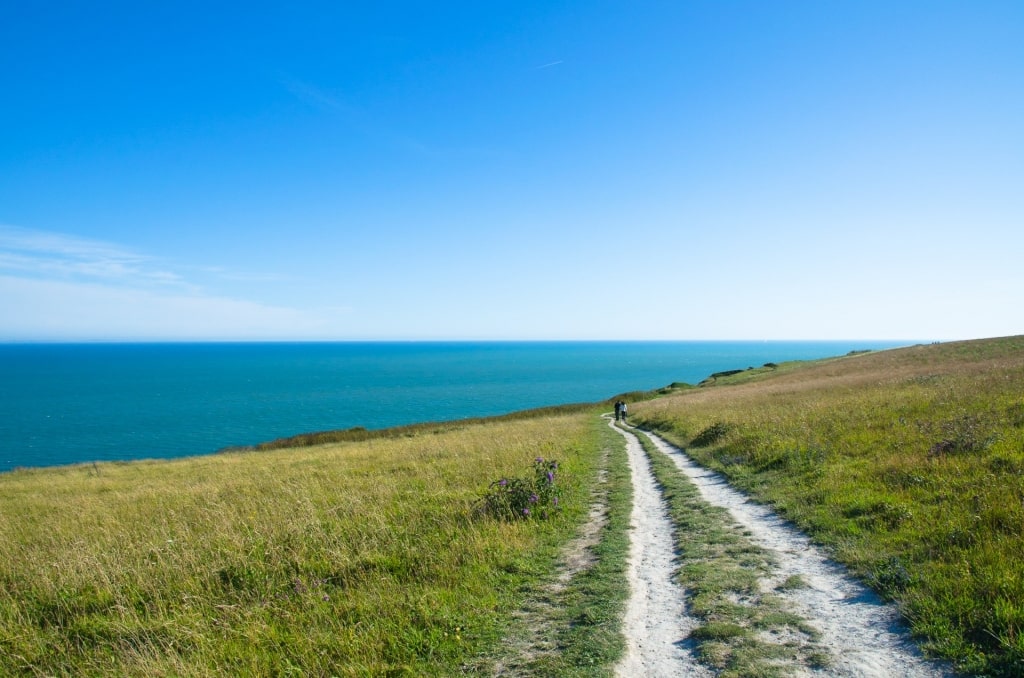
White Cliffs of Dover
The best time to visit Dover is undoubtedly during the late spring, the summer, and into the early fall, when there is less rain. The flowers are in bloom and chances are you’ll have enough sun to enjoy walks along the White Cliffs or around Dover or St. Margaret’s Bay.
Dover’s coastal climate means rain is always a possibility. Come prepared for rain showers and bring good walking shoes.
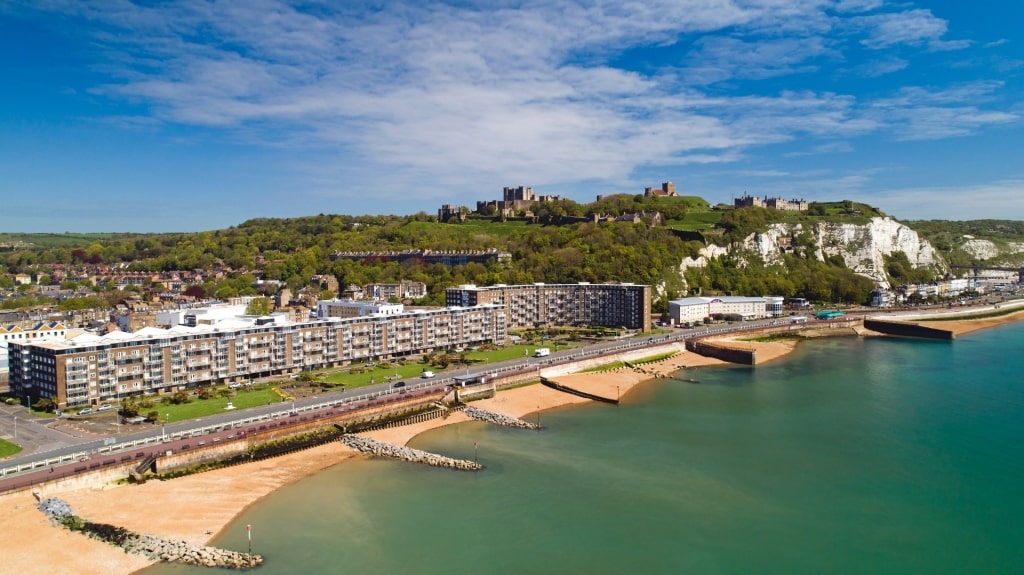
Dover
A world-class luxury cruise to Dover will let you experience all that this historic region has to offer, from formidable clifftop fortresses and magnificent cliff walks to an amiable pub culture, along with the thrum of one of the busiest passenger ports in Europe.
